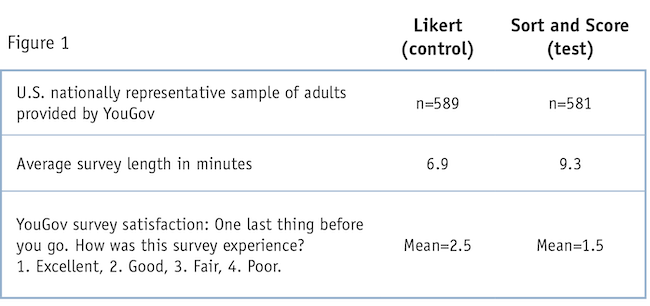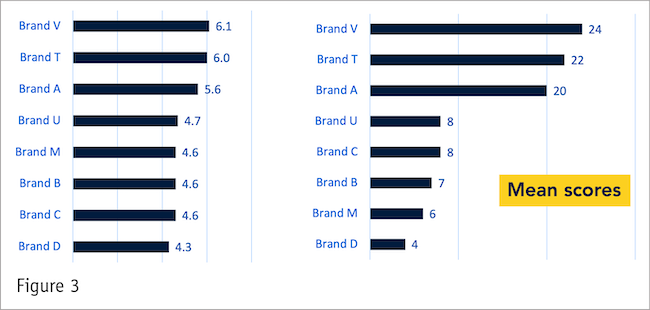Editor's note: Chris Hauck is president of HauckEye LLC and SCORE Metrics LLC.
For many years, Net Promoter Score (NPS) has been the gold standard among marketers for assessing customer perspectives on a company with one simple question: "How likely are you to recommend this product (or service) to a friend or colleague?"
The concept of NPS is undoubtedly intriguing – a single query that promises sustainable growth through exceptional customer experiences. However, we must reflect on our approach and if we've been doing justice to this concept. In today's rapidly evolving business landscape, it's crucial to consider whether your NPS surveys truly serve the purpose of understanding your customers and fostering loyalty.
The current practice of incessantly asking them to rate their likelihood of recommending a company has become so routine that respondents often have an automatic score in mind. During a recent trip, I received over 40 unique NPS survey requests, most of which used a 10-point scale. Consequently, I handed out numerous 8s to a hotel chain, a rental car company and an airline without genuinely considering the quality of their service. In a world where only extreme ratings seem to matter, Likert scale questions have lost their effectiveness in understanding the nuances of customer loyalty. Using such a blunt instrument to gauge complex human emotions often results in unchanging or erratic data, which should not be the basis for crucial decisions or executive bonuses.
The real issue isn’t NPS itself but the basis of most marketing research designs, the Likert scale. This approach was developed in the 1930s by Rensis Likert, an American social scientist and professor of psychology at NYU who developed his numeric scale to measure people’s attitudes and feelings on a scale that was easy to apply and understand. That scale can be anchored, in which case the respondent is asked to rate something in descriptive terms, such as very satisfied, satisfied, neither, dissatisfied and very dissatisfied. Numbers are assigned to these statements in order: very dissatisfied = 1, very satisfied = 5. Further evolution of the scale is simply asking people on a scale from 1 to 5, where 5 means very satisfied and 1 means very dissatisfied. The scale can be 5, 7, 10, 11 or any number you choose. The point is that many marketing research surveys now simply use a Likert scale question as the most important measure of respondent attitude, including, in this case, the NPS. It’s asking people to rate their attitudes and feelings numerically and expecting the outcome to be anything other than outdated and random.
In April of this year I decided to run a test. In conjunction with and with the kind support of Brad Jones of YouGov, my firm did an experiment in which we compared a Likert scale design used in the NPS approach (control cell) to my Sort & Score design (test cell), which introduces a competitive context without a scale. (Sort & Score is an approach that I use when most people use MaxDiff.)
Each recruited respondent was equally likely to be in either the control or the test cell. The most stringent pharmaceutical testing uses this approach to confirm the viability of a new medication. Experimental design is the basis of the scientific method and the best way to compare two different methodological approaches.
In this simple test-and-control design, the variable being analyzed was the amount of differentiation between attributes compared between cells. Our hypothesis was that differentiation in the measures would be significantly greater in the test cell, proving our view that another approach to data collection would produce differentiated and more meaningful results (Figure 1).

Our first observation was that our Sort & Score approach performed better than the series of Likert scale questions on YouGov’s survey experience satisfaction scale. Please note that we recognize that we have used a Likert scale here to compare the two respondent experiences. We also recognize that the test cell approach takes longer for respondents to complete. In our view, the test cell exercise takes more thought than completing a series of repetitive Likert scale questions – and that thought makes all the difference.
Traditionally, the NPS question is only asked of the brand of interest. To provide a comparative format, we asked the same NPS question of key brands in the mobile telephone service industry: How likely are you to recommend each of these brands to a friend or colleague (Figure 2)?

Note that in the research with respondents, we used real brand names to offer an authentic experience for the end user but here we have disguised the brands, as that isn’t the point. The point is that the data looks very different when the respondent is engaged in a more complex exercise that is set in a competitive context. There is greater differentiation across attributes at the aggregate level than when you ask individual Likert scale questions (Figure 3).

This experiment proved that the traditional Likert scale approach is less effective in showing differentiation across the brands than the Sort & Score design.
The original promise of NPS – asking our customers one question that offers a path to true business growth through sustainable “good profits” derived from consistently delivering a customer experience worthy of loyalty – was inspired. But what if we have been asking the question the wrong way? And then we got into the habit of asking that poorly crafted question at every interaction, all the time, under any circumstance and after every experience. And using that mediocre data to justify bonuses and decisions throughout the company. A fresh perspective on NPS surveys is essential and an alternative approach that introduces competitive context into the equation can be very productive. The test Sort & Score approach, which ranks and values brands relative to each other, aims to bring a new understanding to an overused measurement. Sort & Score isn’t the only way to introduce a competitive context to NPS but it is my preferred approach.
Genuinely connect
It's time to admit that customers have developed standard responses to NPS surveys under most circumstances. Regardless of the service quality, we all have our go-to scores on a 10-point or 7-point scale. This overused and uninspired approach diminishes the survey's value. But rather than dwelling on the negative aspects, let's explore how we can refine our NPS survey methodology to genuinely connect with our customers and elevate our decision-making process. It's common for companies to treat NPS data as gospel but it's important to acknowledge that it can be inherently noisy. Tracking NPS data without recognizing its complexity can lead to misguided decisions and erratic tracking data.
What's crucial is that we consider our customers' experiences in a competitive context. Placing the NPS question within such a framework can significantly enhance the survey's value. You gain actionable insights by comparing your performance to your industry competitors. A competitive context is a measurable and easy-to-implement fix to the stale NPS Likert scale-based data. The additional consideration increases the thought process for customers completing your NPS survey. Using a competitive perspective allows the analyst to answer the question of whether any of this matters.
Let's illustrate this with a couple of examples:
- Imagine your brand has the highest likelihood of recommendation in the industry but your competitors are close behind. In this scenario, it's essential to identify opportunities for differentiation and invest in those areas.
- Suppose your brand still leads but your competitors lag far behind. In this case, you can strategically maintain your differentiation while ensuring the quality of your current offerings.
Understanding your relative position compared to competitors is far more valuable than fixating on your NPS score, especially in a world where most companies receive similar scores. This competitive context not only adds value but also enables more informed decision-making.
Business leaders are likely ready for a more nuanced alternative to understanding customer preferences and loyalty. By embracing a more elegant and competitive approach to NPS surveys, we can improve the quality of our decision-making and create a more engaging experience for our customers.
